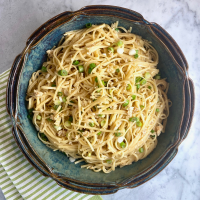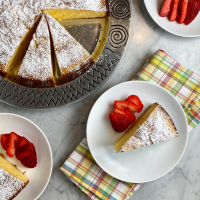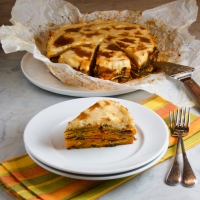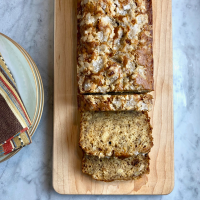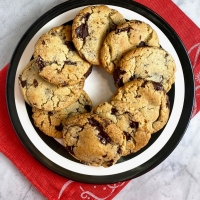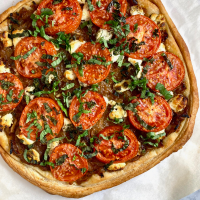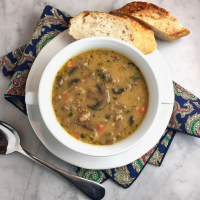
I have a couple wonderful meatball recipes to share. We ate these tender, flavor-packed meatballs with warm marinara sauce, garlic bread, and green salad. It was a fabulous weeknight meal.
This recipe was adapted from The New York Times, contributed by Yasmin Fahr. I doubled the recipe. I also used store-bought marinara, Rao’s, as a shortcut. I served everyone a shallow bowl lined with warm sauce so that the meatballs could be placed on top. Perfect.
The original recipe also suggests serving the meatballs with roasted vegetables such as asparagus or broccoli (which could be cooked in the same oven), over salad, or in a brothy soup.
Yield: about 6 servings
- 1 1/2 cups finely crumbled feta, divided
- 1/2 packed cup fresh mint leaves, finely chopped, divided
- 1/2 cup old-fashioned rolled oats
- 2 T plain thick yogurt (such as labneh or Greek or Icelandic yogurt)
- 2 tsp dried oregano
- 1 tsp red-pepper flakes
- kosher salt (I used Diamond Crystal)
- 2 pounds ground chicken or ground turkey (preferably dark meat)
- 1/4 cup (4 T) extra-virgin olive oil
- 1 to 2 lemons, halved
- marinara sauce and garlic bread, for serving, optional
- Heat the oven to 425 degrees. (I set my oven to convection roast.)
- In a large bowl, mix 1 cup feta with half the chopped mint, plus the oats, yogurt, oregano, red-pepper flakes and 2 teaspoons salt, breaking up any lingering feta chunks with your hands.
- Add the ground chicken, gently combining until it’s lightly speckled with green dots.
- Use a cookie scoop to ration the mixture into 36 to 40 scoops 1- to 1 1/4-inch each.
- Drizzle the oil on 2 sheet pans and use your hands to spread it around.
- Use your oiled palms to shape the scoops into firm but not compact balls; lightly roll them in the oil on the sheet pan when shaping to coat them and prevent them from sticking.
- Once the meatballs have all been rolled out, spread them out evenly on and between the sheet pans.
- Cook meatballs until the bottoms are browned and the centers are no longer pink, 15 to 18 minutes. The internal temperature should reach 165 degrees.
- Squeeze half of the lemon over each pan, then use a wooden spoon to move the meatballs around, turning the browned side up, and scraping up any browned bits on the pan.
- Transfer to a bowl or leave in the pan and top with the remaining feta and mint.
- Cut the remaining lemon into quarters and serve at the table for squeezing on top, as desired.











